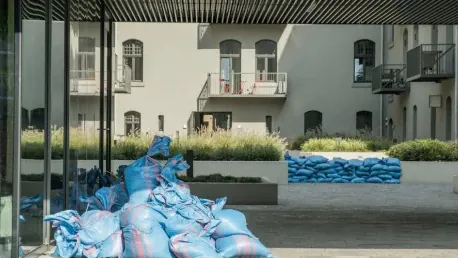Amid discussions that tested the complexities of regional cooperation and funding, the Minot City Council grappled with a crucial vote on utilizing city sales tax to finance a bridge replacement in Velva. Part of the Mouse River Enhanced Flood Protection Project, the initiative underscores the extensive regional approach required to manage flood risks throughout the broader Mouse River basin. The decision to fund this project has sparked crucial conversations about responsibility, equity, and the dynamics between local and regional obligations.
The Debate Over Funding
Concerns from Council Members
Rob Fuller, an outspoken critic during the council discussions, raised significant concerns regarding the financial implications for Minot residents related to funding an infrastructure project located outside their immediate city limits. His opposition centered on the fiscal burden placed on Minot citizens, who would technically be shouldering costs to support Velva’s bridge replacement. Fuller illustrated his point with a stark calculation: Velva residents would theoretically need to spend approximately $370 million in Minot to generate the required $3.7 million in sales tax necessary for the project. His perspective highlighted an essential tension within regional collaborations, where localities may be asked to support broader infrastructure improvements.
However, Fuller’s concerns were countered by other council members and city officials who advocated for the broader regional benefits of the flood protection system. Utilities Director Jason Sorenson provided an expansive view of the flood protection initiative, which he noted impacts the entire Mouse River basin. He emphasized that state contributions to the project are contingent upon regional cooperation and that this widespread partnership is instrumental in securing legislative backing and necessary funding. This broader perspective underscores that flood management is inherently a collective effort that benefits from shared resources and cooperative strategies across different communities.
Regional Cooperation and Legislative Support
The significance of regional cooperation was further reinforced by City Manager Harold Stewart and Mayor Tom Ross. Both officials highlighted the enduring importance of recognizing downstream impacts and fostering collaborative ties for the successful implementation of the flood protection project. They articulated the notion that flood risks do not adhere to municipal boundaries and that effective mitigation requires unified efforts extending beyond individual city limits. Stewart and Ross argued that a comprehensive and inclusive approach would not only distribute financial responsibilities more equitably but also maximize the chances of receiving substantial state and federal support.
Council member Mike Blessum also acknowledged Fuller’s concerns but presented a broader perspective on the usage of sales tax for the project. He posited that since residents from surrounding areas frequently shop in Minot, they are, in effect, contributing to the city’s tax revenues. In Blessum’s view, this interdependence justified the employment of city sales tax funds for a project that, while located in Velva, would ultimately benefit the entire region, including Minot. Despite the split opinions, the council voted in favor of the funding, passing the measure with a 5-2 majority. This result illustrates the nuanced balance elected officials must navigate between local fiscal stewardship and regional investment for future gains.
Broader Implications for Regional Flood Management
Contributions from McHenry County
David Ashley, chairman of the Souris River Joint Board (SRJB), provided further context by detailing the active contributions from McHenry County and its Water Resource District. Ashley highlighted the county’s ongoing commitment to both new construction initiatives and the management of existing flood controls. The involvement of McHenry County exemplifies the critical need for regional participation in flood management efforts. Ashley incisively noted that, without such involvement, Minot would be left to shoulder the entire cost of its flood mitigation efforts alone, which would be a significantly heavier burden for its residents.
This approach emphasizes the collective responsibility of communities across the river basin to work together for enhanced flood protection. Ashley’s remarks underscored that shared participation not only spreads the financial load but also fortifies the overall effectiveness of flood prevention measures. By pooling resources and aligning efforts, the region can attain a more resilient infrastructure capable of safeguarding all communities within the floodplain. This cooperative dynamic is crucial for fostering a sustainable and effective flood protection strategy that mitigates risks and ensures the safety and well-being of residents throughout the area.
The Path Forward
Amid intense discussions that delved deep into the complexities of regional cooperation and funding, the Minot City Council faced a significant vote on whether to use city sales tax to finance a bridge replacement in Velva. This bridge replacement forms part of the Mouse River Enhanced Flood Protection Project, emphasizing the extensive regional strategy needed to manage flood risks across the wider Mouse River basin. This funding decision has ignited important conversations concerning responsibility, equity, and the balance between local and regional duties. The issue at hand is whether the financial burden should be shared among neighboring communities or should rest solely with those directly benefiting. Council members are considering the long-term benefits and potential drawbacks, such as setting a precedent for future projects and the impact on local taxpayers. The decision encapsulates the broader challenge of balancing local interests with regional benefits in addressing critical infrastructure needs. Ultimately, the council’s vote will reflect their stance on collaborative regional efforts versus localized fiscal responsibility.









